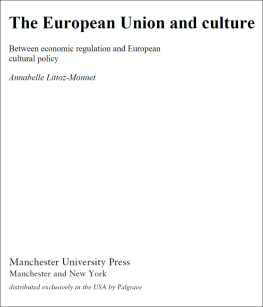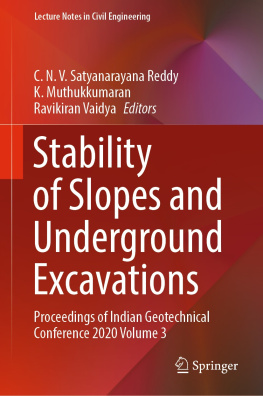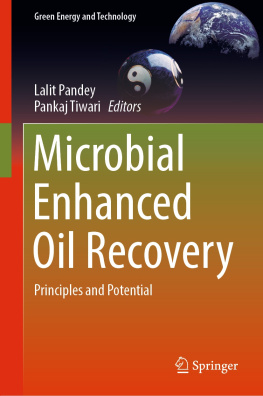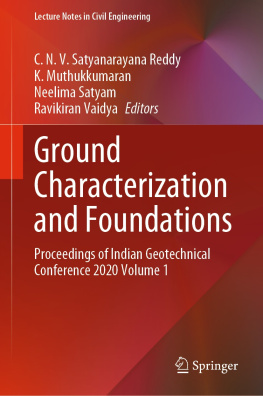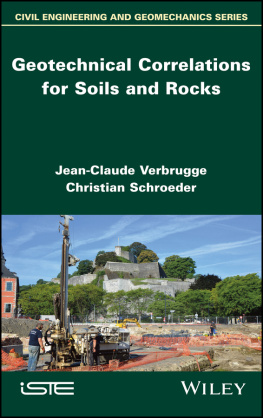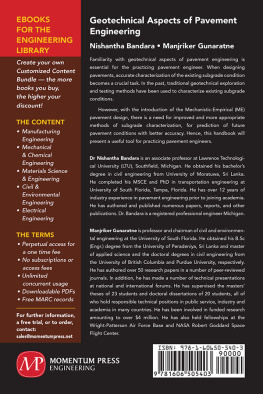Monnet - In Situ Tests in Geotechnical Engineering
Here you can read online Monnet - In Situ Tests in Geotechnical Engineering full text of the book (entire story) in english for free. Download pdf and epub, get meaning, cover and reviews about this ebook. year: 2016;2015, publisher: John Wiley & Sons, Incorporated, genre: Children. Description of the work, (preface) as well as reviews are available. Best literature library LitArk.com created for fans of good reading and offers a wide selection of genres:
Romance novel
Science fiction
Adventure
Detective
Science
History
Home and family
Prose
Art
Politics
Computer
Non-fiction
Religion
Business
Children
Humor
Choose a favorite category and find really read worthwhile books. Enjoy immersion in the world of imagination, feel the emotions of the characters or learn something new for yourself, make an fascinating discovery.
In Situ Tests in Geotechnical Engineering: summary, description and annotation
We offer to read an annotation, description, summary or preface (depends on what the author of the book "In Situ Tests in Geotechnical Engineering" wrote himself). If you haven't found the necessary information about the book — write in the comments, we will try to find it.
Monnet: author's other books
Who wrote In Situ Tests in Geotechnical Engineering? Find out the surname, the name of the author of the book and a list of all author's works by series.
In Situ Tests in Geotechnical Engineering — read online for free the complete book (whole text) full work
Below is the text of the book, divided by pages. System saving the place of the last page read, allows you to conveniently read the book "In Situ Tests in Geotechnical Engineering" online for free, without having to search again every time where you left off. Put a bookmark, and you can go to the page where you finished reading at any time.
Font size:
Interval:
Bookmark:

Series Editor
Gilles Pijaudier-Cabot
Jacques Monnet

First published 2015 in Great Britain and the United States by ISTE Ltd and John Wiley & Sons, Inc.
Apart from any fair dealing for the purposes of research or private study, or criticism or review, as permitted under the Copyright, Designs and Patents Act 1988, this publication may only be reproduced, stored or transmitted, in any form or by any means, with the prior permission in writing of the publishers, or in the case of reprographic reproduction in accordance with the terms and licenses issued by the CLA. Enquiries concerning reproduction outside these terms should be sent to the publishers at the undermentioned address:
ISTE Ltd
27-37 St Georges Road
London SW19 4EU
UK
www.iste.co.uk
John Wiley & Sons, Inc.
111 River Street
Hoboken, NJ 07030
USA
www.wiley.com
ISTE Ltd 2015
The rights of Jacques Monnet to be identified as the author of this work have been asserted by him in accordance with the Copyright, Designs and Patents Act 1988.
Library of Congress Control Number: 2015952403
British Library Cataloguing-in-Publication Data
A CIP record for this book is available from the British Library
ISBN 978-1-84821-849-9
Jacques Monnet is a very incisive researcher, who does not accommodate with the classical approaches of in situ testing techniques or interpretation approaches, innovating with utmost originality in equipment, procedures and analysis. However, what could be seen as a pure speculative attitude, which frequently characterizes some of our researchers seeking for new publications, often complicating the objectiveness of ground characterizations, he has always proved to have a practical attitude giving solutions to problems that other more common test procedures do not solve. That was the case of some of the innovative pieces of equipment like the Gomcamtre described along with others in this book.
The result of his work expressed now in this book surpassed my expectations since I was not envisaging such an enriching document, plenty of objective solutions, together with the description of advanced techniques that he has been pursuing during his professional activity, allowing the enrolment of new solutions in non-textbook ground conditions and special projects.
As Jacques refers to, at beginning of the book, in situ tests for ground characterization have been suffering from a lack of credibility to some well known scientists, who prefer well controlled laboratory tests, pointed out as fundamental where the test conditions are well known and the measures are realiable and can allow the direct determination of the parameters that feed the increasing numerical codes available in geotech practice, with complex models behind them. This may be a consequence of the inertia of in situ testing specialists to diffuse the potentiality of in situ data, as well as being well interpreted and obtained from the most adapted techniques.
Jacques Monnet decided not to follow the usual pattern developed in many textbooks where the distinct technologies (equipment and procedures) are displayed sequentially. This practice is somehow an invertion of the natural process of geoengineering, conception/design of geotechnical problems, looking at the properties to be determined in each big group of grounds (soils or rocks or intermediate material), and then looking for the tools/methods that can help that process.
This book starts with the techniques and processes that allow the measurement of the essential physical indices and the sampling processes to obtain representative samples to deduce the best information in laboratory tests, where we forget that the soil has its own history before arriving at the laboratory. After detailing the processes of drilling, preparation, transportation of soils, through sampling, the chapter concludes with an approach to rock mechanics, finishing the natural step to the following, most important chapters related to the mechanical and hydraulic properties of soils. The approaches of each chapter are ruled by the properties that geotechnical practitioners are seeking, for which distinct solutions in terms of techniques (equipment, procedures and methods) are proposed, including common/classical tests, or advanced techniques. This comes as being quite logical as, for direct shear strengths, shear tests in boxes, vane tests, and the Philonnat phicomtre are suggested; for stress-strain relationships, and therefore for the evaluation of deformability and compressibility, the surface load tests (PLT), dilatometers (DMT), penetrometers (SPT, DP, CPT...), pressuremeters (PMT, SBPT) and dilatometer (DMT) tests as well as some new techniques, like Gomcamtre, are presented and their essential interpretation methods are developed. Then a very important chapter, currently forgotten in handbooks of site investigation, deals with permeabilty tests in soils, executed in localized points (from boreholes), but also the more generalized solutions for the evalaution of transmissivity, like the pumping tests with multi-checking points. The books ends with an interesting resum of the essential properies that can be derived and how they can be deduced from sustained correlations.
In summary, this book is a highly recommendable document for students and researchers, accademics and practitioners in engineering and will contribute to constructing one more pillar to allow for a better understanding of the geotechnical terroirs, enhanced by the advantage and the potentiality of using good in situ equipment, adapted for the purpose of our projects and interpreted with competence.
Antnio Viana da Fonseca
Chair of ISSMGE-TC1202
Ground Characterization from In Situ Testing
September 2015
| Symbols | Designations | Units |
| a | Side of the square plate | m |
| a | Dilatation coefficient of the pipes (PMT) | cm3/MPa |
| a | Bore radius (PMT) | m |
| A | Transverse section of the pile | m2 |
| A | Reading of the detachment pressure of the membrane (DMT test) | kPa |
| A | Length of penetration measured (drilling parameter) | m |
| Ac | Straight section of the cone (penetrometer) | m2 |
| An | Straight section of the pile at the level of n | m2 |
| Au | Straight section of the cone (penetrometer) above the cylindrical part of the cone | m2 |
| Angle of attack of the bevel of case of the core drill, in degrees | degree | |
| Slope of the unitary drawdown curve (well) | m-2/h | |
| Empirical drilling parameter (drilling parameter) | ||
| b | Radius of the first plastic zone (PMT) | m |
| B | Diameter of the plate or width of the foundation or the pile | m |
| B | Reading of the pressure for a membrane advancement of 1.1 m (DMT) | kPa |
| B | Diameter of the injection or pumping cavity (Lefranc) | m |
| Bc | Semi-thickness of the pressure sensor | m |
| B | Normalized interstitial pressure ratio (CPTU) |
Font size:
Interval:
Bookmark:
Similar books «In Situ Tests in Geotechnical Engineering»
Look at similar books to In Situ Tests in Geotechnical Engineering. We have selected literature similar in name and meaning in the hope of providing readers with more options to find new, interesting, not yet read works.
Discussion, reviews of the book In Situ Tests in Geotechnical Engineering and just readers' own opinions. Leave your comments, write what you think about the work, its meaning or the main characters. Specify what exactly you liked and what you didn't like, and why you think so.


